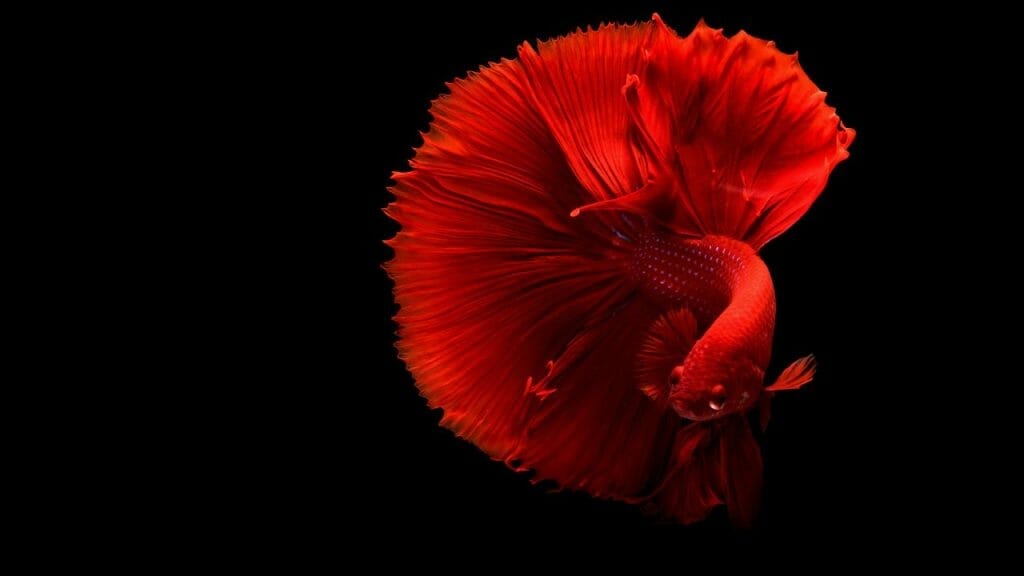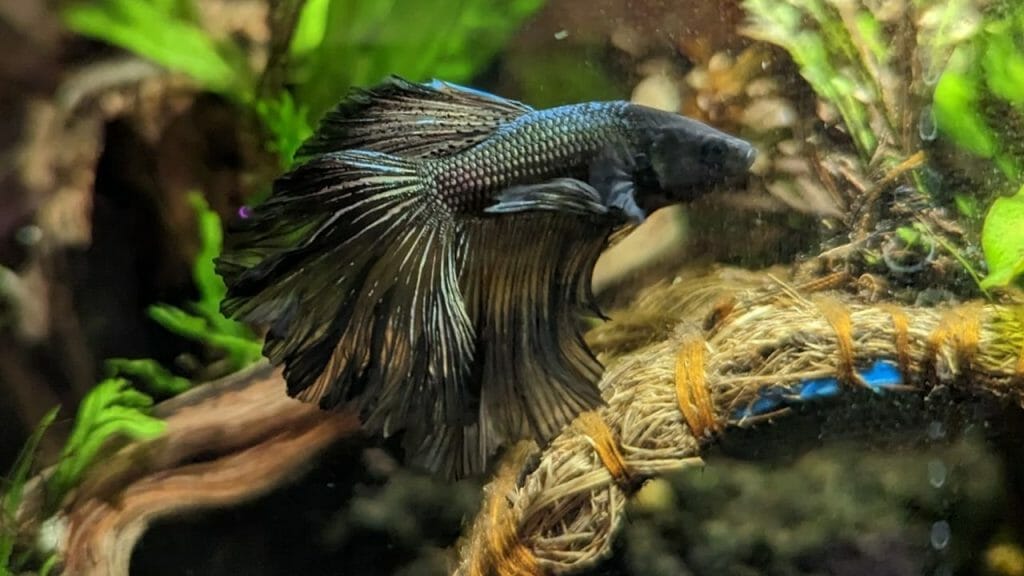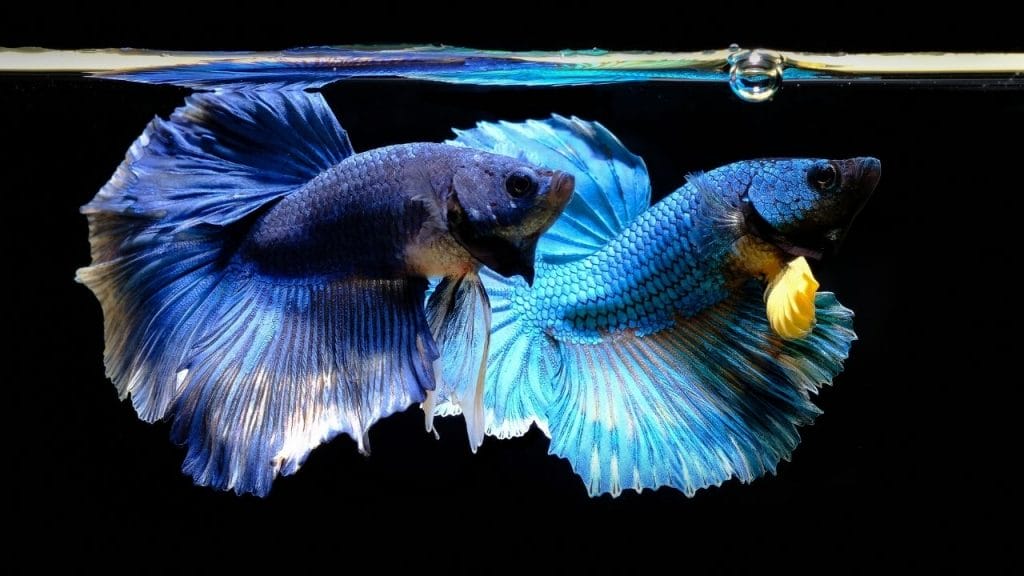This post was created with help from AI tools and carefully reviewed by a human (Muntaseer Rahman) . For more on how we use AI on this site, check out our Editorial Policy.
Check Out These FREE Tools We Made JUST For You!
Betta Fish Genetics 101: Science Behind Breeding Colorful Bettas
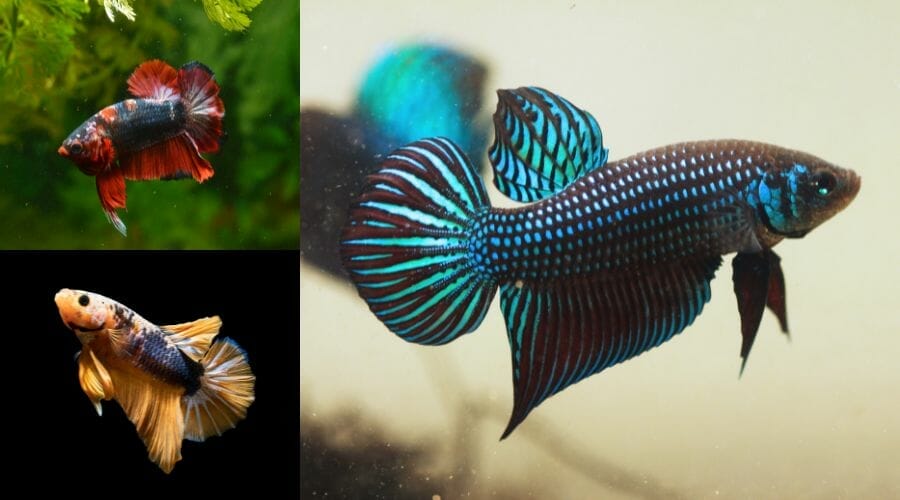
Picture this: you’re staring at your gorgeous red betta swimming around, and suddenly you wonder – how the heck did this little guy end up looking like a swimming ruby?
Plot twist: it’s way more complicated than you think.
Want to get a printable version of this betta fish crossbreeding chart? Click here! If you want to use this graphic on your website, please link back to this post as source.
The Mind-Blowing Truth About Betta Colors
Your betta isn’t just “red” or “blue” – they’re actually living, breathing paint masterpieces with up to 26,000 possible genetic combinations.
That’s right. Twenty-six thousand.
To put that in perspective, that’s more combinations than most people will see bettas in their entire lifetime.
Think of Your Betta as a Layered Cake (Seriously)
Here’s how one expert puts it: “Think of each scale as being a cake with many layers, and when you look at it from the top, you can only see the top one.”
Your betta has four distinct color layers stacked like this:
Layer 1: The Shiny Top (Iridescent Layer)
This layer contains iridophores that produce blue and green hues through light interference. Think of it like nature’s glitter – but way cooler.
The weird part? These cells can actually move and change the wavelength of light they reflect. It’s like having built-in mood lighting.
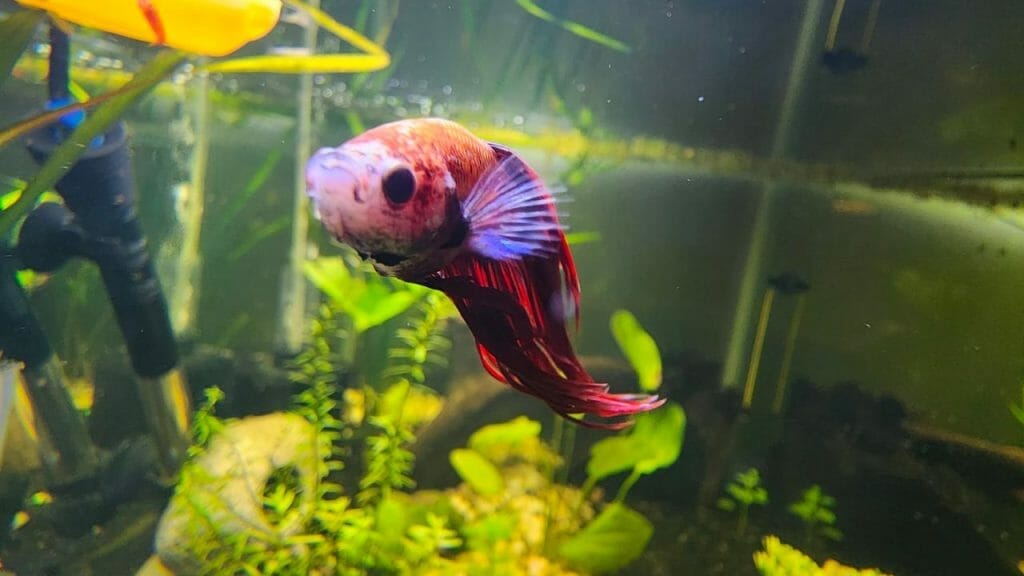
Layer 2: The Drama Queen (Black Layer)
The more melanophores (black cells), the darker your betta gets – and it can reach complete black coverage across the entire fish.
This layer basically decides whether your betta looks mysterious or bright.
Layer 3: The Warm Zone (Red Layer)
Red production happens in two steps: first, yellow pigments form using carotenoids from diet and body-made pteridines, then specialized cells convert these into vibrant reds.
Here’s the kicker – even “blue” bettas often have red streaks because this layer is so dominant.
Layer 4: The Foundation (Yellow Layer)
The bottom layer that shows through when everything else is transparent.
The Genetics Game: It’s Like Pokémon Cards, But Alive
Remember trading cards as a kid? Betta genetics work similarly – you’re combining different “cards” (genes) to create new combinations.
Dominant vs. Recessive: The Bullies and the Quiet Kids
Dominant genes express their traits even when only one copy is present, while recessive genes require two copies to manifest.
Think of it this way: dominant genes are like that friend who talks over everyone at parties. Recessive genes are the ones whispering in the corner – you need two of them together to hear what they’re saying.
The Marble Gene: Nature’s Wildcard
The marble gene is partially dominant and can produce unpredictable color changes across generations. Fish with this gene may continue to change color patterns as they age.
Basically, marble bettas are like living mood rings that never stop changing. Cool? Absolutely. Predictable for breeding? Not so much.
Why Wild Bettas Look Nothing Like Pet Store Fish
Wild Bettas generally have muted colors, with natural greens and browns that allow them to blend into their environments.
Your flashy pet betta is essentially the result of hundreds of years of selective breeding. Wild bettas intensify in color during breeding periods to attract mates, but captive-bred bettas have been bred to be intense all the time.
It’s like the difference between someone who dresses up for special occasions versus someone who shows up to grocery shopping in full formal wear.
The Science Behind Those Instagram-Worthy Colors
Blue Bettas: Living Mirrors
Blue coloration occurs through motile iridophores via a multilayered thin-film interference phenomenon, with underlying melanophores providing a black sheet that enhances color purity.
Translation: your blue betta is basically a biological mirror system that would make physicists jealous.
Red Bettas: Diet Matters More Than You Think
Red pigment production requires carotenoids from the fish’s diet – if these are scarce, the red may appear pale or muted.
This means feeding your red betta properly isn’t just about health – it’s about keeping those colors vibrant.
Black Bettas: The Holy Grail
Achieving a true black betta is challenging due to the need to eliminate iridescent pigments entirely.
Getting a solid black betta is like winning the genetic lottery – everything has to line up perfectly.
Modern Breeding: When Science Meets Artistry
Today’s breeders aren’t just crossing their fingers and hoping for the best. Researchers have identified specific genes responsible for traits including coloration patterns, the “Dumbo” phenotype with pectoral fin outgrowth, and extraordinary body size enlargement.
We’re talking actual genetic mapping. Scientists can now point to specific chromosomes and say “this controls that color.”
The Challenge: Predicting the Unpredictable
Betta genetics is quite complicated because bettas have been extensively mixed bred for years. A betta with pure base genetic codes is very rare, making it very difficult to predict spawn outcomes.
It’s like trying to predict what happens when you mix every paint color in the art store – theoretically possible, practically a nightmare.
The Numbers That’ll Blow Your Mind
- A single breeding pair can produce over 400 eggs with a 90% survival rate
- One female can lay between 700-1300 eggs per spawn
- Over 100 genotypes have been identified, creating more than 70 genetic traits in bettas
That’s a lot of potential baby bettas with a lot of potential color combinations.
Why This Matters for Betta Lovers
Understanding genetics isn’t just for breeders trying to create the next prize-winning fish. It helps you:
- Appreciate your betta more: That color isn’t an accident – it’s the result of incredibly complex biological processes
- Better care: Knowing that diet affects red coloration means you can keep colors vibrant
- Realistic expectations: If you’re thinking about breeding, you’ll understand why it’s so challenging
The Future of Betta Genetics
Scientists have now successfully developed genetic manipulation tools for bettas, including CRISPR/Cas9-mediated knockout and knockin techniques.
We’re entering an era where betta breeding might become more science than art. Whether that’s exciting or terrifying depends on your perspective.
The Bottom Line
Your betta fish is basically a swimming genetic masterpiece that took centuries to create. Every betta trait, phenotype, and strain stems from mutations of wild-type coloration through selective breeding and genetic manipulation.
The next time someone says “it’s just a fish,” you can smile knowingly and think about those 26,000 genetic combinations swimming around in that little body.
Pretty amazing for a creature that fits in a small tank, right?
About Author
Hello, I’m Muntaseer Rahman, the owner of AcuarioPets.com. I’m passionate about aquarium pets like shrimps, snails, crabs, and crayfish. I’ve created this website to share my expertise and help you provide better care for these amazing pets.
Disclaimer
This site is owned and operated by Muntaseer Rahman. AcuarioPets.com is a participant in the Amazon Services LLC Associates Program, an affiliate advertising program designed to provide a means for sites to earn advertising fees by advertising and linking to Amazon.com. This site also participates in other affiliate programs and is compensated for referring traffic and business to these companies.


